 Erica Lee, Marketing Manager, Sandvik Coromant, South & East Asia
Erica Lee, Marketing Manager, Sandvik Coromant, South & East AsiaWe’re living in a time of rapid digitisation, where computers and robots are performing tasks once deemed science fiction. The technology shifts signal another industrial revolution, and even though we are still in its very early stages, the pace of change is accelerating.
The industry needs smarter, leaner and agile factories, where faster and reliable decision making and intelligent data stream management are prerequisites.
Aerospace segment is probably the only segment that still looking slightly good though some restructuring are seen to take place in the market place. Manufacturing labour force still have many challenges ahead. The ability to do catch up with manufacturing industry 4.0 is still far-fetched. But in order to be in the digital frontier, we need to be ready and get equipped.
As the Wall Street Journal explained in June 2013: “The new industrial revolution is a wave of technologies and ideas that are creating a computer-driven manufacturing environment that bears little resemblance to the gritty and grimy shop floors of the past.”
We are quickly moving from information technology to intelligent technology. Products in a factory will find their way independently through a production process, and a worn cutting tool insert will know when it’s time to be replaced by a fresh and ask an available robot to get a new one and make the change.
The technology can be used in basically all industries for increased sustainability, quality, safety, efficiency and profitability. The Internet of things is what will take your component through the entire production process and autonomously ensure that the manufacturing is performed flawlessly from start to end.
The industry needs smarter, leaner and agile factories, where faster and reliable decision making and intelligent data stream management are prerequisites. Additionally, a competence shift will be essential. To succeed, your staff will need to concentrate on innovative processes and smart product development rather than traditional tasks that are taken over by automation.
Sandvik Coromant will continue to strengthen our operations and presence in different ASEAN countries. We have planned to further strengthen our position in this region with a strong conviction that this is one of the few regions globally that we could expect better than average growth in the coming years. In 2016, we will continue to drive ONE business idea which is to help our customers to be more competitive in their businesses by improving productivity and reducing downtime in their productions.
We believe that the ASEAN region will grow in 2016. We are aligning our Business Strategy with the expected growth in this region so that we can further strengthen our market position. Most importantly, this is to meet the increasing expectations of our customers and this is our promise!
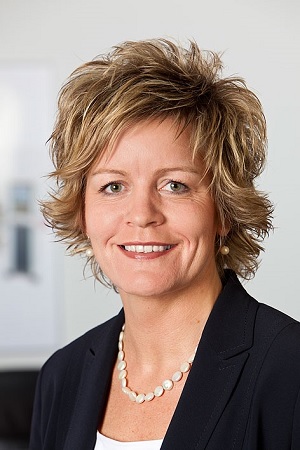 Stefanie Flaeper, Managing Director Sales/Marketing, transfluid Maschinenbau GmbH
Stefanie Flaeper, Managing Director Sales/Marketing, transfluid Maschinenbau GmbHThere are changes to use automatic systems, even in low cost countries. There will be more and more automation systems because of the influence of humans to a quality aspect. This is a tendency at the moment that we feel. We have already more automation in countries with low labour cost. Of course this includes also a flexible production, quantities in case of batches go down, and so automation systems start already from single pieces.
Coming back to the above items, also here machines will be required which are more flexible, with short set up times, with a set up independent on operators, with quality controls, integrated in the system machines have to be on top of automation, to get more energy efficiency. There will be a need of internal data communication to different places, flexible production with high efficiency need to be integrated to a lean production and has to be if possible, a one piece flow production. If this production could be reached with integrated humans or in a automatic cell, it will be productive everywhere.
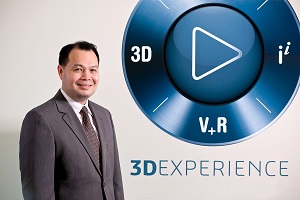 Benjamin TAN, Director of Professional Channel, AP South, Dassault Systèmes
Benjamin TAN, Director of Professional Channel, AP South, Dassault Systèmes
We have seen digitalisation happen across industries. In manufacturing, digitalisation is bringing cost and time savings and reducing risks from product conceptualisation to development. In 2016, we will see businesses continue to embrace 3D technology in the manufacturing process, as more decision makers realise the need for an all-encompassing platform that allows users to create, simulate, publish, and manage their data.
More manufacturers will be testing their products for design and functionality needs and gaining insights on their product right at conceptualisation tapping on 3D technology. This is already opening up a new world where manufacturers are able to craft, simulate and implement a product with ease, all through virtual means, removing the cost and time required to produce a product for physical testing.
Additionally, a new generation of products will bring a host of technological requirements including process performance and simulation analysis. We live in a time where we want immediate outcomes and look to our tools to provide these instant results. With technological advancements, we are able to produce our desired product faster and with fewer errors. This is possible as 3D technology offers manufacturers the flexibility to easily modify products to fit specific needs.
It took 70 years for hand-crafting to be replaced by mass-produced goods, but just a decade for today’s technologies – including 3D printing – to threaten mass production. These technologies change existing processes and build more dynamic and sustainable production models, like additive manufacturing and manufacturing-as-a-service.
Furthermore, business decision makers are now tapping on 3D technology to see and feel what their customers are experiencing, and are taking steps towards embracing new digital concepts that allow them to do so. Manufacturing is truly moving towards the age of experience.
This is why at Dassault Systèmes SOLIDWORKS, we aim to deliver compelling and connected experiences for our customers, as well as for our customers’ customers. We believe that the world needs cohesiveness and innovation and we are heading towards a future in manufacturing with an experience that fires the imagination – a type of experience that is all-embracing and easy to share.
Digitalisation in manufacturing has allowed for more innovations that have created countless opportunities, including 3D solutions for all stages of the product development process that contains design, simulation and communication amongst others. This is empowering businesses to go to market faster and more cost-effectively, with significantly less safety risks – allowing them to focus on innovation.
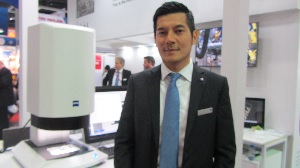 Shaun Lim, Regional Director for Southeast Asia, Carl Zeiss Pte Ltd
Shaun Lim, Regional Director for Southeast Asia, Carl Zeiss Pte Ltd
One of the major highlights I would say for 2016 and the near future would be on the software part. Everybody is now talking about Industry 4.0, and how this is going to shift the future of manufacturing.
Carl Zeiss has already launched a software that we call PiWeb, which is an interesting tool for all industries requiring the evaluation of large data volumes. By using PiWeb, you achieve both higher quality and lower costs. Also, your quality and process data can be analysed in real time, evaluated and graphically represented.
In contrast to traditional systems, the generated reports are not equipment-specific but product-specific. Potential sources of error or existing anomalies can be recognised within seconds during production. Nor more time-consuming searching in comprehensive measurement records. PiWeb is scalable. This allows smaller companies or suppliers as well as automobile manufacturers to benefit from the use of PiWeb.
“All companies nowadays are looking at improving their productivity and this involves cost. People are talking about increasing capacity and at the same time lowering costs. And this adds to the pressures suppliers’ experience. Suppliers are expected to provide high-specification machines that are affordable. This especially happens in Asia where the market is very competitive. “
ZEISS O-SELECT provides precisely the simplicity and reliability needed in today's industrial environment. The digital measuring projector is particularly suitable for checking the dimensional accuracy of distances, radii pr angles. Common test parts include punched and bending parts, or injection-moulded and laser-cut workpieces. In production environments, optical and contact coordinate measuring machines are increasingly replacing manual equipment such as goniometers, gauges and profile projectors. However, the influence of the operator with these manual tools must not be disregarded. With O-SELECT, ZEISS is reducing this influence to a minimum. Thanks to its high level of automation and ease of use, complex measurements can be completed quickly, traceably and reproducibly.
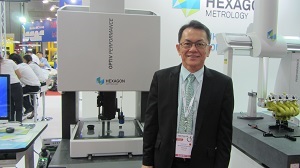 Taveesak Srisuntisuk, Managing Director, Hexagon Metrology, Thailand
Taveesak Srisuntisuk, Managing Director, Hexagon Metrology, Thailand
Hexagon is growing a lot in Vietnam. The country is now part of the world’s bigger game, in which it has passed the point of no return. The economy has been becoming more open and engaged in international affairs. Amidst the talk of decline in businesses, Taveesak explained that he is not expecting anymore slowdown since they have already reached the bottom. He added that some of its projects are starting to pick up. Competition will be very stiff because everyone wants to get orders. In addition, Taveesak said Pakistan is a growing market for their products, and expects a bright future in this country.
One of the products Hexagon is promoting is the Optiv Performance 443 Measuring System. The system come in the mid-price range and features a tactile LSP-W1 High-Speed Scanning Sensor, touch trigger probes, a variety of optical sensors and the option of Dual Z-Design. Optiv Performance 443 is ideal for both the measuring room and use on the shop-floor.
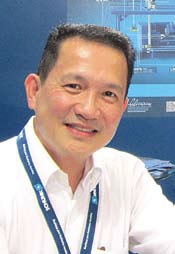 Alexander Tijioe, President, Schunk Intec Pte. Ltd
Alexander Tijioe, President, Schunk Intec Pte. LtdI see automation picking up not only in Thailand but the entire South East Asian region. Companies are trying to reduce manpower, but not to replace the people, rather to get more output from their businesses. This is what I have been seeing in Indonesia, Thailand and Vietnam. These are the three big countries using automation.
Right now, it’s not about cheap labor cost anymore. It’s more on reducing work hazard. For example a factory with a very hot environment -- this is when automation comes in place. Schunk is number one in the world in terms of automation. Together with our partners and robot makers, we are on a very good edge to help strengthen the market position of our customers.
In this current world of fast technological advancement there is a critical demand for the very best quality products and services that can only be supplied by a high level of productivity which requires automation.
I believe a lot of companies nowadays who want to use automation in their businesses. However, they want to start with something easy and simple that requires little time to set-up. A manufacturing process that is not automated at all can be very time-consuming, and the jump from no automation to semi-automation brings huge benefits. So they start with semi-automation to make certain tasks easier and faster, and later expand to full automation.
Again we are not trying to replace man here. We live in a golden age of technological progress. The global market requests for availability, quality, reasonable prices and services and increase productivity.
In every business there is always a challenge. For Schunk, the challenge is always how we can differentiate ourselves. And how to educate people to understand what we are offering.
Schunk is investing in every industrial sector. The company is willing to spend money and become a top player here in the region. We engage in short and long term investments.
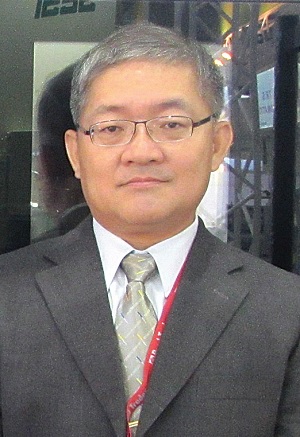 Alex Chen, Managing Director, Tongtai Machine & Tool Co. Ltd
Alex Chen, Managing Director, Tongtai Machine & Tool Co. Ltd
The focus of business today has shifted away from selling machines and services to creating a great overall customer experience. Because change is the only constant in today’s environment, our customers expect us to respond to their spoken and unspoken needs. Factors that contribute to a customer’s overall buying decision includes: automation, and high-quality but low price machines. It is a fact that manufacturers must continually look for ways to reduce costs and increase throughput while enhancing the quality of the parts they produce. Tongtai is positioned to provide the equipment and resources for integrating the automated systems that can keep our customers ahead of the rapidly evolving global marketplace.
Air Jordan Horizon AJ13













